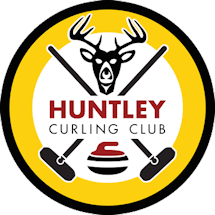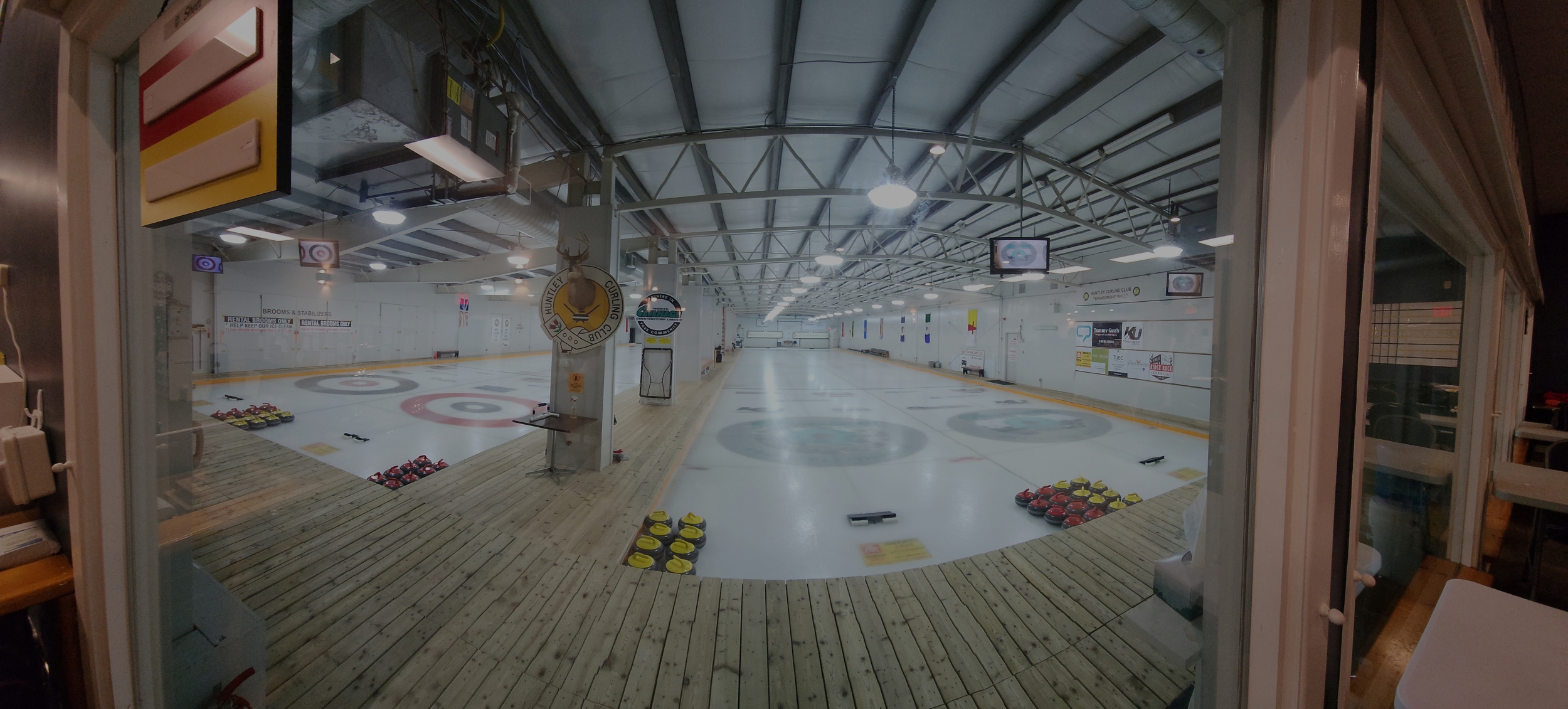The following terms and definitions are used throughout the curling world.
- Backline
- The line across the ice at the back of the house. Stones which are over this line are removed from play.
- Biter
- A stone that just touches the outer edge of the circles and is considered in the house.
- Blank End
- An end in which no points have been scored.
- Board Weight
- Throwing a stone with enough speed that it will come to rest in an area just behind the hacks – about 6 feet behind the house. Synonymous with barrier/bumper weight.
- Bonspiels
- Curling tournaments that usually occur over a weekend.
- Broom/Brush
- The instrument used to sweep the ice. Brooms with brush heads are most common.
- Burned Stone
- A stone in motion touched by a member of either team, or any part of their equipment. Burned stones are removed from play.
- Button
- The circle at the center of the house.
- Control Weight
- A takeout shot that is slow enough that the sweepers have relative control over its curl; faster than board weight, but slower than normal takeout weight
- Counter
- Any stone in the rings or touching the rings which is a potential point.
- Curl
- A twist of the stone's handle upon release makes the stone curl, or curve, as it travels down the ice. The rock curls in the direction of the turn. The amount a rock bends while travelling down the sheet of ice.
- Delivery
- The body motion of a curler as the rock is being shot.
- Draw/Draw Weight
- The momentum required for a stone to reach the house or cirlces at the distant end. Rock that stops in front of or in the house.
- End
- Similar to an inning in baseball. One end is complete when all 16 rocks (eight per team) have been thrown to one end. A game is usually eight ends, or about two hours. Championship games are 10 ends, or about 2 1/2 hours. After each end, the score is determined.
- Freeze
- A draw that finishes in front of and next to another rock.
- Front Ring
- Diameter of 12-foot circle in front of the tee line.
- Guard
- A stone that is placed in a position so that it may protect another stone, usually a rock between the hog line and the house used to prevent the opposition from hitting a rock in the house.
- Hack
- A rubber foothold from which curlers deliver the rock. It is about 125 feet from the scoring area.
- Hack Weight
- The weight required to deliver a stone in order that it travels to the hack at the far end.
- Hammer
- The last rock of each end.
- Heavy Weight
- A rock delivered with a greater force than necessary.
- Heavy Ice
- When the ice is "slow" and the rocks have to be thrown harder.
- Hit
- A take-out. Removal of a stone from the playing area by hitting it with another stone.
- Hog Lines
- Located 21 feet from each tee. A rock must be released before the near hog line, and travel beyond the far hog line, or it is removed from play.
- Hogged Stone
- A stone that does not reach the far hog line. It must be removed from play.
- House
- The scoring area, the rings or circles toward which play is directed consisting of a 12-foot ring, 8-foot ring, 4-foot ring and a button.
- Hurry
- A command shouted by the skip or shooter to tell the sweepers to sweep.
- In-Turn
- The rotation applied to the handle of a stone that causes it to rotate in a clockwise direction and curl for a right-handed curler.
- Keen Ice
- When the ice is "fast" and less momentum is needed to get the rock to the desired target./dd>
- Lead
- The player who delivers the first two rocks of each end, alternating with the opponent's lead.
- Narrow
- A rock delivered inside the intended line of delivery.
- Normal Weight
- Normal takeout weight; faster than control weight, but slower than peel
- Out-Turn
- The rotation applied to the handle of a stone that causes it to turn and curl in a counter-clockwise direction for a right-handed curler.
- Pebble
- Small droplets of water intentionally sprayed on the ice that cause irregularities on the surface, allowing the rocks to curl. Also a verb; the action of depositing water droplets on the ice, as "to pebble the ice between games"
- Peel Weight
- A stone delivered with a heavy takeout weight
- Raise
- A draw that raises, or moves/bumps, another rock into the house.
- Rocks
- Also known as stones, curling rocks are made of rare, dense, and polished granite quarried only on Ailsa Craig, an island off Scotland's coast. Each piece of granite is carefully machined and balanced, and a goose-neck handle is added for the player's convenience. The result is a standard 42 to 44 pound rock, with a diameter of one foot, and a height of 4.5 inches, not including the handle.
- Roll
- The movement of a curling stone after it has struck a stationary stone in play.
- Scoring
- Only one team scores per end, that being the team with the rock closest to the center of the house. Points are awarded for each rock closer to the center than the opponent's. The maximum score in an end is eight, which is very rare. Typically one to three points are scored per end. The team with the highest total at game's end is the winner.
- Second
- The player who delivers the second two rocks of each end for their team, alternating with the opponent's second.
- Sheet
- The 146-150 foot long and 14.5-16.5 foot wide ice playing area. The sheet's design allows play in both directions.
- Shot Rock
- At any time during an end, the stone closest to the button.
- Skip
- The player who holds the broom as a target for shots by the other three players. Skips are also the team strategists and must study, or read, the ice; anticipate the amount of curl, and then call the shots. Skips usually throw the last two rocks of each end.
- Slider
- Worn over the shoe on the sliding foot in the delivery of a stone to allow for a long, smooth motion and follow through. Specially-made curling shoes have sliders built in.
- Straight Ice
- When the ice conditions do not allow the stones to curl much.
- Sweeping
- The action of moving a broom or brush back and forth in the path of a moving stone. Players sweep to make the rock travel farther or to keep it from curling more than desired. Good sweepers can increase the distance a stone travels by as much as 15 feet. Sweeping creates a thin film of water under the rock, allowing it to glide easier.
- "Swingy" Ice
- When ice conditions cause stones to curl greatly.
- Takeout
- Removal of a stone from the playing area by hitting it with another stone.
- Teams
- A curling team, which consists of four players: the skip, third (or vice skip), second and lead. All players are involved in every shot, with one shooting (delivery the stone), two sweeping, and one calling strategy. Two teams play against each other.
- Tee Line
- The line that passes through the center of the house parallel to the hog line and backline.
- Third
- The player who delivers the third's two rocks of each end, alternating with the opponent's third. Also known as the vice skip, this player holds the broom, or target, when the skip shoots, and also helps the skip with game strategy.
- Wide
- A rock delivered outside the target line.
- Weight
- The amount of force given to the stone during the delivery.





















